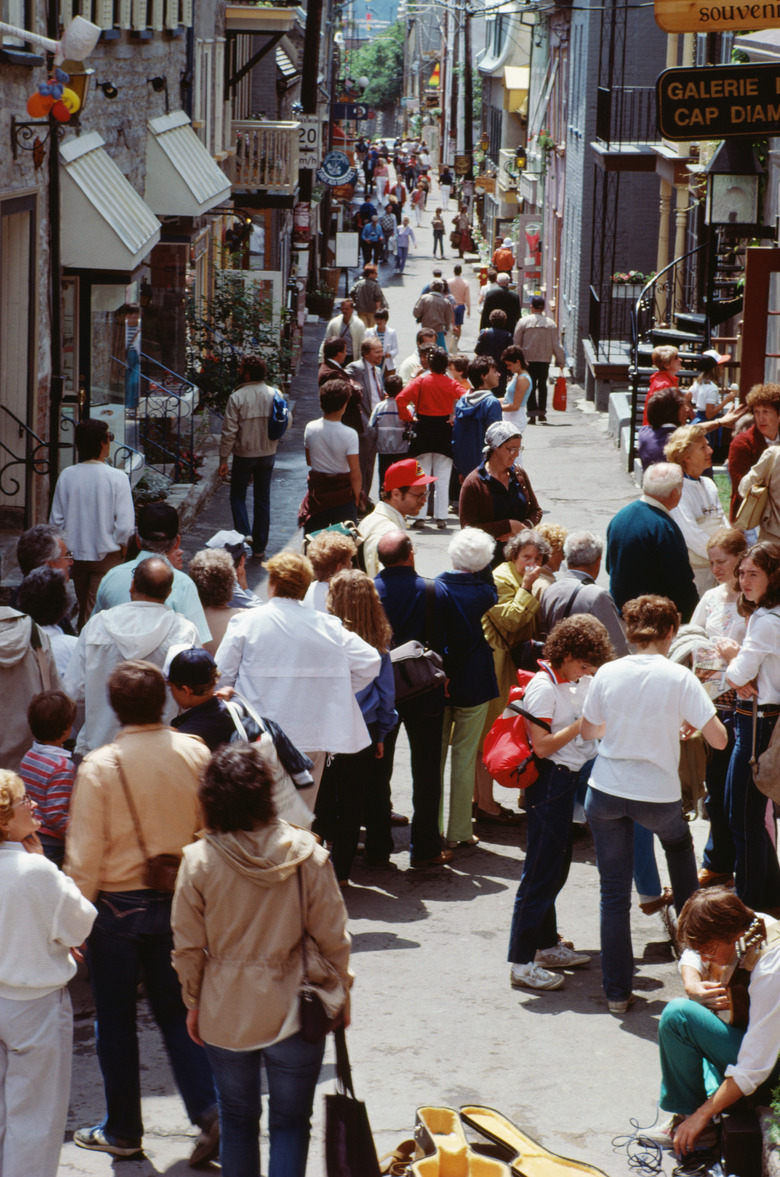What Is A Reason For The Decline In Biodiversity?
Fossil records indicate that the diversity of species on the planet has never been stable. Instead, diversity rose and fell in natural cycles that spanned tens of millions of years. The problem people face today is an estimated rate of species loss that is nearly 1,000 times greater than historical rates. Biodiversity decline encompasses more than just species loss. It also includes the loss of genetic diversity within species and loss of ecosystems. It can mean that biodiversity has been harmed, rather than lost altogether. Humans have always exploited nature, but as the global population has grown exponentially in recent centuries, so has humanity's impact on biodiversity.
Overexploitation
Overexploitation
Numerous animal, invertebrate and plant species are extinct, or threatened, because of human exploitation. Humans exploit natural resources for food, sport, building materials, medicine and cultural purposes — and did so with far more abandon before society became more environmentally conscious. Humanity's attempts to understand of the environment began around 160 years ago, and biodiversity issues did not become part of the public debate until late in the 20th century. By this time a lot of biodiversity decline had already occurred. Biodiversity decline continues due to a rapidly expanding human population. Habitat is damaged in order to meet growing needs for agriculture, urban development, water and materials. Fish, wildlife and plants are overharvested, despite mounting evidence that many harvesting practices are unsustainable.
Pollution and Global Warming
Pollution and Global Warming
Pollution of terrestrial and aquatic ecosystems with physical pollutants such as chemicals, light and noise, as well as biological pollutants in the form of invasive species and diseases, has caused ecosystem degradation by altering species diversity and biomass. The scientific community remains divided over whether air pollution, along with forest clearance, is driving global warming. Regardless of the cause, the rapid pace of current global warming poses a problem for biodiversity. It is likely that many species will not have time to adapt to shifting habitat conditions and thus will become restricted to smaller patches of their original habitat, or go extinct. Scientists predict that climate change will increase the frequency of natural disturbances, creating more stress for biodiversity.
Loss of Ecosystem Resilience
Loss of Ecosystem Resilience
Each time people damage an ecosystem, they also increase the probability that biodiversity will decline in response to future environmental change. Healthy ecosystems possess features that protect them against environmental change. These features include genetic diversity, within and among species; ecosystem connectivity, a term that refers to the amount of intact habitat available to plants and animals; and widespread geographical distribution of populations. A diverse gene pool ensures that some members of a species will posses traits that will allow them to survive change. Habitat connectivity ensures that distressed individuals have the ability to relocate to better habitat. A population that is spread over a large geographic area is less vulnerable to local disturbance, compared with a population whose range is restricted to a small area. The capacity of today's ecosystems to buffer environmental change, like global warming, has been significantly reduced by past human actions.
Policy Problems
Policy Problems
Scientific research and biodiversity monitoring are expensive, so only a small percentage of the world's biodiversity is studied. Humans have a poor understanding of the current status of biodiversity and less understanding of what biodiversity looked like prior to human influence. Accurately estimating the extent of biodiversity decline is therefore limited. Because of a lack of scientific evidence to present to policy-makers, support for tough environmental laws is often lacking in the political arena. The social and economic costs associated with environmental laws are higher for some community sectors, making the implementation of such laws a contentious issue. Because of these difficulties, laws protecting biodiversity are slow to develop and often inadequate.
References
- Convention on Biological Diversity: Chapter 1 Status and Trends of Global Biodiversity
- University of Washington School of Environmental and Forest Sciences: Biodiversity, Ecosystem Function, and Resilience: Ten Guiding Principles for Commodity Production Landscapes
- Global Issues: Loss of Biodiversity and Extinctions
- Secretariat of the Pacific Regional Environment Programme: Major Conservation Policy Issues for Biodiversity in Oceania
- Rainforest Conservation Fund: Causes of recent declines in biodiversity
Cite This Article
MLA
Campbell, Kirsten. "What Is A Reason For The Decline In Biodiversity?" sciencing.com, https://www.sciencing.com/reason-decline-biodiversity-22141/. 24 April 2017.
APA
Campbell, Kirsten. (2017, April 24). What Is A Reason For The Decline In Biodiversity?. sciencing.com. Retrieved from https://www.sciencing.com/reason-decline-biodiversity-22141/
Chicago
Campbell, Kirsten. What Is A Reason For The Decline In Biodiversity? last modified August 30, 2022. https://www.sciencing.com/reason-decline-biodiversity-22141/
